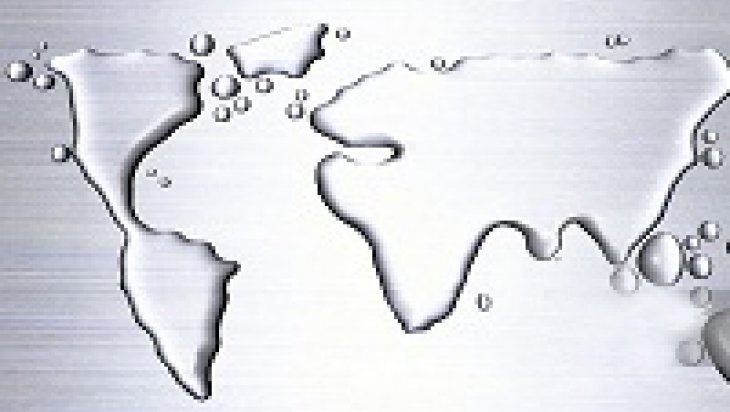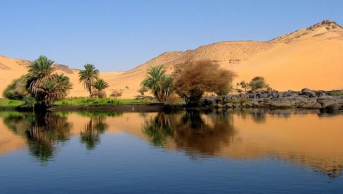Toward a more Integrated Nexus Framework: (Re)thinking about Water and Economy

An aptly titled report by World Bank, “High and Dry”, appears to be one of the most recent warnings about risks of a dangerous tandem of raising temperatures and growing water scarcity for many national economies worldwide. This is also a warning for global economy at large, given the number of economies -and their combined size- at risk. The report, calling water as a “common currency”, makes us to rethink the climate change related impacts on economy through “water lenses”.
The World Bank Report starts with the centrality and universality of the water issue: water “channels the main impacts ofclimate change to all aspects of the economy, society, and environment—through precipitation, storm surges, floods, droughts, rising seas, and groundwaterrecharges. Harnessing the productive potential of water and limiting itsdestructive impacts are important even in the most advanced economies.” Such a complex phenomenon like the water challenge can only be tackled with an “th expanded water nexus”, framework covering a lot of ground of the biggest water users: food production, urban areas, energy production,and the environment.
The report’s alarming tone reaches a peak when it mentions the growing unevenness in runoff at the expense of currently water stressed regions : “Many regionsalready experiencing water stress will experience even more scarcity, includingmuch of the Middle East and North Africa, Central Asia, and CentralAmerica, all of which exhibit a consistent trend toward diminishing runoff.” A closer look into areas with expected reductions in runoffs reveals even a murkier picture: “much of the decline in runoff is projected in the least developedcountries, where access to water is most crucial for agriculture and energy.
A central question in the report is “Could a lack of water act as a brake on prosperity and economic progressunder climate change?” The report discusses four pathways how water cost much for the economic well-being in a given setting: First, “if water is ascarce factor of production and is poorly allocated or inefficiently used, therecould be impacts on broad economic performance—captured through metricssuch as GDP growth, trade balances, and industry structure”. Second, water related disasters (either through extreme events, or because of mismanagement of water and related infrastructure) can cause a direct harm via destroying “lives and assets”. Third pathway might be “longer term impacts of water relateddiseases on health, nutrition, education and human capital with consequencesfor poverty and economic growth.” Fourth, water and climate change might carry the potential to increase the propensityfor conflict. Thus, there might be security-related costs associated with water.
In dealing all these challenges, a compound yet flexible strategy is needed. In other words, “while improving water allocation is essential to satisfying trends in futurewater use", “providing security against water-related shocks”through investmentsin adaptation should also be realized, all within a flexible policy framework which could entail no-regret measures (not putting all the eggs in one basket), modular approaches, and soft policies such as economic instruments. Flexibility is needed mainly because of the high level of uncertainties involved in water and climate related scenarios.
The Report’s critical view of Sustainable Development Goals (SDGs) is also worth mentioning. Instead of narrowly focusing on the issue of water as one, singled-out SDG, the Report calls for a comprehensive reevaluation of water from a broader perspective: “ although water only explicitly comprises one of the seventeen SDGs, the expandedwater nexus framework demonstrates how all sectors of society are interlinkedthrough” water.
Middle East and North Africa provide a microcosm for many of the current challenges and negative changes lying ahead. The report reads, “already the world’s driest region, MENA will experience lowerwater availability and higher temperatures. The dependence on water intensive modes of employmentsuch as irrigated agriculture are a concern in the context of further drying and increasingwater demands.” Considering “the lack of surface flows and reliance on non-renewable groundwaterreserves for irrigation”, according to the report, agriculture would remain highly “vulnerable to predictedwarming across the region”. The report warns that the Middle East will be one of the three regions (along with African Sahel and Central Africa) that will be effected worstly economicallyby water scarcity, even under favorable conditions. The negative impact of water scarcity in MENA region can climb up to 14 percent by 2050. Such huge impact on GDPs across the region can easily cause many conflicts (not necessarily interstate conflicts, though) to flare.
In this context, more serious undertakings are necessary in this part of the globe. However, given the current state of affairs in the region, this seems very unlikely. Except some localized and isolated practices toward the right direction, a systemic response to water and climate related challenges -which is in high demand- is severey lacking.






